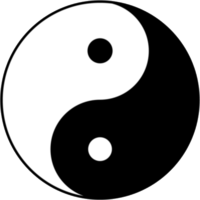"The Tao of Photography - Seeing Beyond Seeing"
Authors: Philippe L. Gross, Ph.D. and S.I. Shapiro, Ph.D.
Publisher: Ten Speed Press [c] 2001, 136 pages, $24.95
Philippe L. Gross grew up in Switzerland. His early interest in photography led him to the study of optics. He studied psychology at the University of Hawaii, and is now a university lecturer, photographer and Editor-in-Chief of the International Journal of Transpersonal Studies.
S.I. Shapiro is a Professor of Psychology at the University of Hawaii, author of numerous articles, and the Executive Editor of the International Journal of Transpersonal Studies. He took up photography after the birth of his son.
Learning to see creatively is perhaps the hardest aspect of modern photography; today's electronic cameras have taken over so much of the technology of photography, but the essence of the art -- seeing, understanding, composing -- is still the prerogative of the photographer only. So an analysis of some of the psychology of photography, by two such distinguished professionals, is a welcome text.
Central to Taoism is the concept of liberation. The authors stress that photography, as a force for aesthetic liberation, should be able to free itself from the formal constrictions that convention has imposed. The photographer should train to see beauty, order and meaning through the lens, rather than study to reproduce, in various forms, the traditional subjects and structures of the art.
The beautifully reproduced photographs and the quotations from various artists focus the reader's attention on some of the key issues that the authors stress. They quote Ernst Haas: "I am not interested in shooting new things, I am interested in seeing things new." Camera angle, point of view, use of shadow, willingness to shoot dark subjects -- all these point to the authors' thesis that photography is a construction of reality rather than a representation of it. And, moreover, the authors stress that the experience of a photograph is that of the viewer, not the photographer. When we "take a picture" we should realize that we are making a representation of nature that must be new and meaningful to the viewer. So, for example, a portrait by Philippe L. Gross called "Stride" shows a walking figure shot from above with only the body from below the waist visible. But it is not a portrait with the head cut off -- rather it is a perception of the act of walking. Ideally, the viewer will now perceive this act differently.
Sometimes, the effect is comic, as in a picture of three mail-boxes, one closed, two open. The comic effect, however, is not in the boxes themselves; it is a perception of the incongruous which the photographer imparts to the viewer.
The text is theoretical, and not always easy reading, but the impact is strong.
COPYRIGHT 2002 Photographic Society of America, Inc.
COPYRIGHT 2002 Gale Group



